
‘12
Bracken Fern Fiddlehead
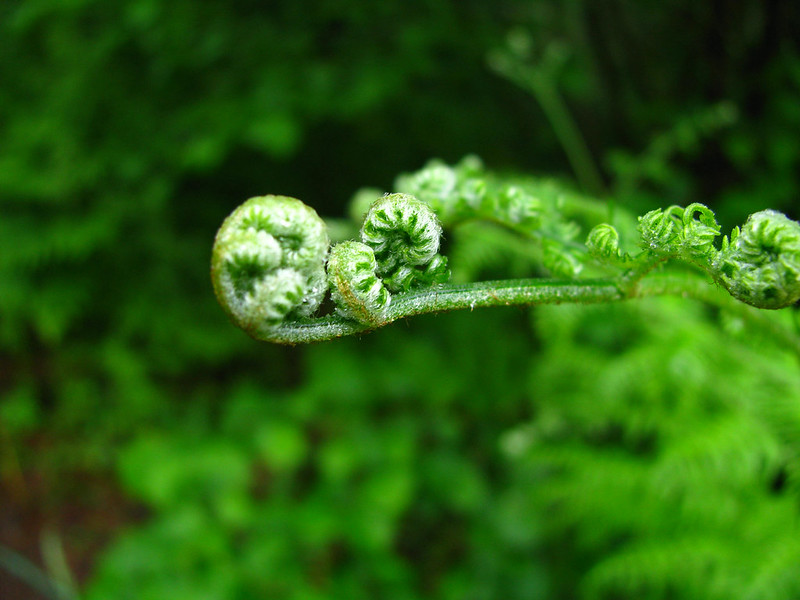
Bracken Fern Fiddlehead
‘12
Farmers Dig Holes and Fill Them In Again
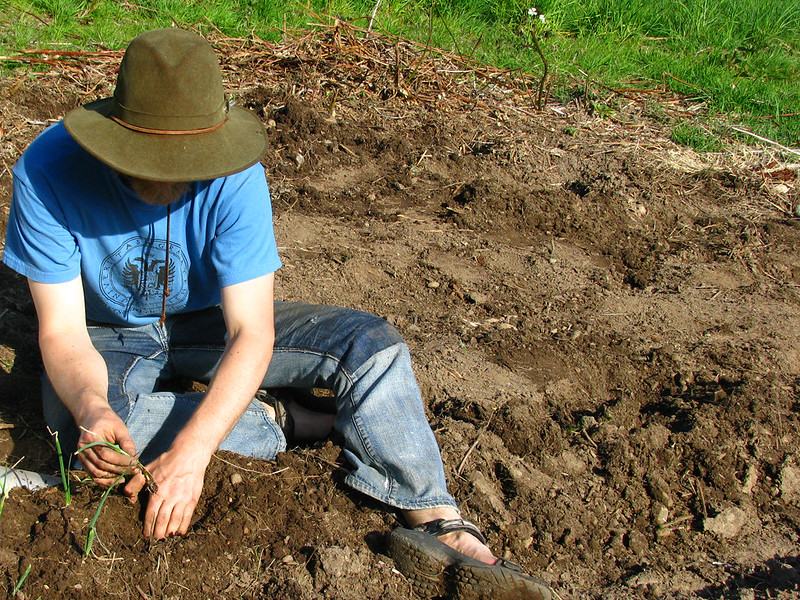
A mystery farmer with a nice hat planting onions.
Humans are such busy-bodies. What else can explain our consistent need to move dirt and rocks around, killing some plants and seeding others? There's something fundamentally satisfying about working with one's hands to make change in the land — something that we can't seem to resist. This may begin to explain why we're always behind with our planting. Lots of things have made it into the ground, but we seem to acquire new plants just a bit faster than we can plant the ones we already had.

Using crowbars and old-fashioned brawn to lever a big rock out of its house in the asparagus trench.
Though I've spent many words describing our adventures with fruit trees, I should note that we are not such fools as to believe we can subsist on fruit alone. This wisdom comes the hard way; some of us have tried such a diet in the past. So! Employing our hard-earned sagacity, we dug garden beds and sowed them with vegetables. Digging garden beds involved the usual farm entertainment — bending our backs, uprooting blackberries, tossing thistles, and digging up broken glass. The asparagus trench became a contender for most unexpectedly difficult gardening when we decided to remove the rock we uncovered rather than digging in a different direction. Though the rock derailed our operation for a couple hours, we managed to get our asparagus planted.
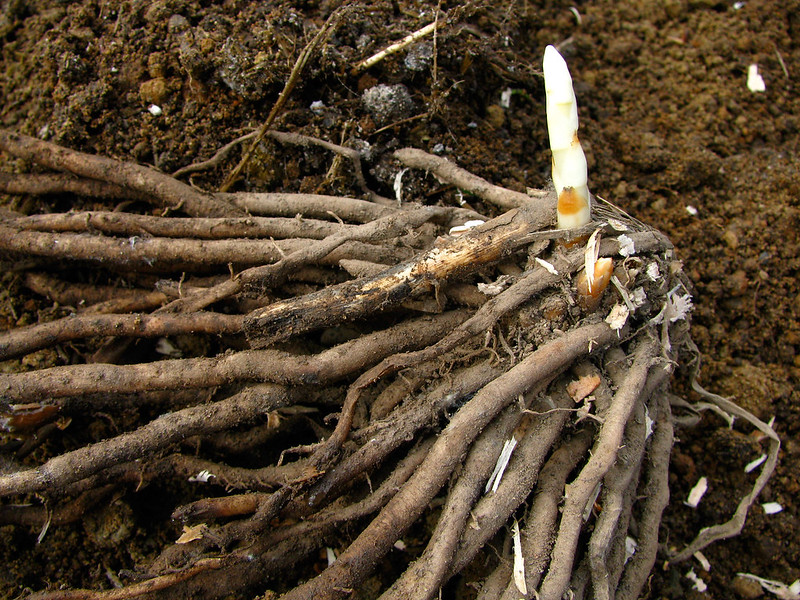
Asparagus with roots exposed.
A brief tour of our other vegetables:
Our sugar peas are short, scrubby vines. They haven't taken off yet, but I'm sure they're just biding their time. The red potatoes, on the other hand, are broad-leafed and burgeoning. Walla-Walla and Copra onions are still young and tender, while celery leaves have startling lime-hued foliage. Tiny leaves of yellow kale are only just starting to poke out from the earth. Serrano and bell peppers are caged in wire and covered by plastic to keep them from the cold. The sunchokes are planted and plotting their eventual overthrow of the garden. My Dad brought us an assortment of tomato starts, which have been re-potted into larger homes and are looking perky.

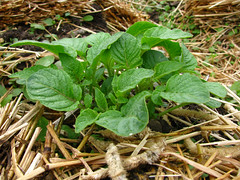

To see these images at a larger size, click the thumbnails.
‘12
May Flowers

Pacific Rhododendron in the rain.
May started out as a warm embrace. We had more than one week of summer weather and days where sunlight lingered, fading with evening but — like the rest of us — too comfortable to go anywhere in a hurry. The bee hives swirled with the bustle of high summer. Honeycomb was rapidly constructed on the hive frames and workers hummed in rapid transit between the apple trees, hawthorn, and bluebells. As of a week ago, several frames in each hive had been entirely built out with honeycomb and eggs laid, preparing to rapidly expand the workforce available to build and gather for the hives.
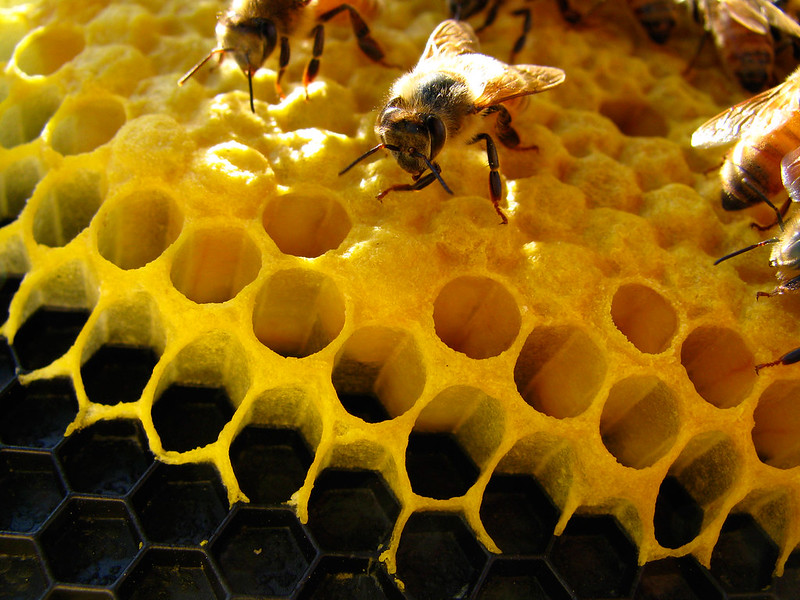
Worker bees on capped honeycomb.
Even our relatively small bee colonies seem to be doing an excellent job pollinating the apple trees. They intermingle in the boughs with the native bees, who wake earlier and work later than our bees. The local bees aren't as easily discouraged from doing their job, either. A week ago the weather turned to what I call poet's weather — gentle rain falling on a world of green. Silver skies and rain kept the honey bees indoors, but the bumblebees and mason bees kept right on pollinating without complaint. Perhaps the native bees are familiar with the lilacs, and their wafting scent served as a reminder that there is much nectar to be collected.
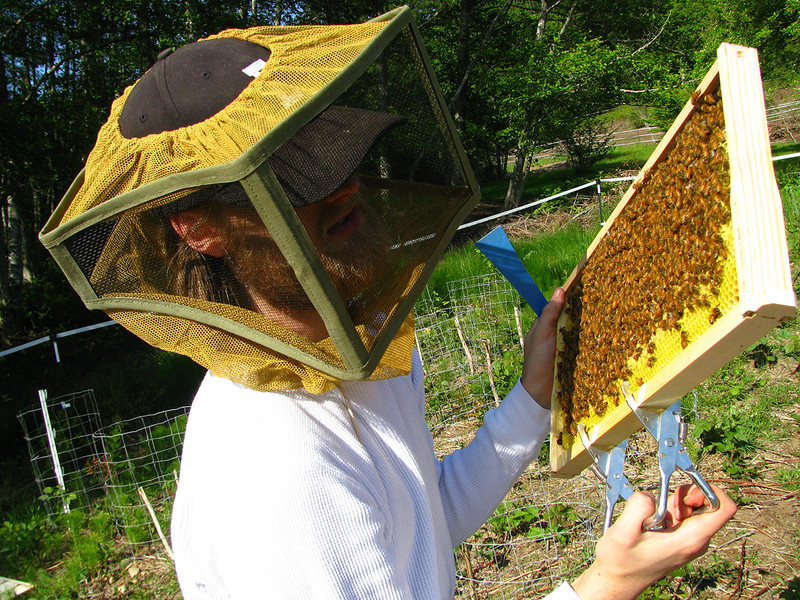
Erik examines a hive frame.
The wetter weather comes with the end of our apple blossom festival. The Northern Spy's last few blossoms glisten wetly, and the smaller King tree has a few tenacious flowers clinging to its branches. The rain promises to wash away these holdouts, revealing the next piece of the orchard's life cycle. The cherry plums and Bartlett pear have set fruit — a good early sign, though not always a reliable indicator of how many to expect for late summer's harvest. I haven't yet had opportunity to examine the cherry trees, which should now have hard green cherries growing in clusters.

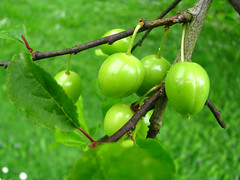

To see these images at a larger size, click the thumbnails.
‘12
Enjoying morning rain in the old orchard
She stares and drifts away with stilted gait
Legs made to leap fences

